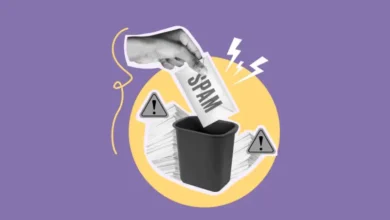Error messages act as guides, aiding developers in locating and resolving code issues, integral to development. One common error that developers encounter, particularly those working with macOS and iOS applications, is the NSCocoaErrorDomain error with the error code 4, accompanied by the message: “Could Not Find the Specified Shortcut.” This article delves into the complexities of Errordomain=nscocoaerrordomain&errormessage=could not find the specified shortcut.&errorcode=4 error, explores potential causes, and provides a comprehensive guide to troubleshooting and resolving the issue.
Understanding NSCocoaErrorDomain and Error Code 4
NSCocoaErrorDomain is a domain used by the Cocoa framework in macOS and iOS to handle various errors related to file handling, persistence, and other core functionalities. Error code 4 within this domain specifically refers to an issue where the system cannot find a specified shortcut. This error often arises when an application attempts to access a file or resource that does not exist or is not properly referenced.
Common Scenarios for NSCocoaErrorDomain Error Code 4
- File Not Found: The application is trying to access a file that has been moved or deleted.
- Incorrect File Path: The specified path to the file or resource is incorrect or malformed.
- Insufficient Permissions: The application does not have the necessary permissions to access the specified file or resource.
- Corrupted Shortcut: The shortcut or alias file is corrupted and cannot be resolved to the original resource.
Importance of Error Handling in Development
Proper error handling is crucial in software development as it ensures that applications can gracefully handle unexpected situations. Ignoring errors or failing to handle them correctly can lead to crashes, data loss, and a poor user experience. By understanding and addressing errors like NSCocoaErrorDomain error code 4, developers can create more robust and reliable applications.
Causes of the Errordomain=nscocoaerrordomain&errormessage=could not find the specified shortcut.&errorcode=4
File or Resource Unavailability
One of the most common causes of the NSCocoaErrorDomain error code 4 is the unavailability of the specified file or resource. This can occur if the file has been moved, deleted, or renamed after the shortcut or reference was created. When the application tries to access the resource, it fails to locate it, resulting in the error.
Example Scenario
Consider an application that stores user preferences in a file. If the user manually deletes or renames this file, the application will be unable to find it the next time it tries to read the preferences, leading to the NSCocoaErrorDomain error code 4.
Incorrect or Malformed File Paths
Another common cause of this error is incorrect or malformed file paths. This can happen if the application constructs the file path dynamically and there is a bug in the path construction logic. Even a small typo or incorrect directory separator can prevent the application from finding the specified file.
Example Scenario
An application may construct a file path by concatenating directory names and file names. If a developer mistakenly uses a backslash instead of a forward slash in a macOS or iOS application, the constructed path will be invalid, and the application will not find the specified file.
Insufficient Permissions
Insufficient permissions can also lead to the NSCocoaErrorDomain error code 4. If the application does not have the necessary read or write permissions for the specified file or directory, it will be unable to access it, resulting in the error.
Example Scenario
Consider an application that needs to read a configuration file stored in a system directory. If the application’s sandboxing rules or the operating system’s permissions prevent it from accessing this directory, the application will encounter the NSCocoaErrorDomain error code 4.
Corrupted Shortcuts or Aliases
Shortcuts or aliases can become corrupted for various reasons, such as file system errors or unexpected shutdowns. When an application tries to resolve a corrupted shortcut, it may fail to locate the original resource, leading to the NSCocoaErrorDomain error code 4.
Example Scenario
An application might use an alias file to reference a frequently accessed document. If this alias file becomes corrupted due to a disk error, the application will be unable to resolve it and access the original document, resulting in the error.
Troubleshooting NSCocoaErrorDomain Error Code 4
Verifying File or Resource Availability
The first step in troubleshooting this error is to verify the availability of the specified file or resource. Ensure that the file exists at the expected location and has not been moved, deleted, or renamed.
Steps to Verify File Availability
- Check the File Path: Verify that the file path specified in the application is correct and points to the intended file.
- Locate the File Manually: Use Finder (macOS) or File Explorer (iOS simulator) to navigate to the specified file path and confirm that the file exists.
- Restore Missing Files: If the file has been accidentally deleted or moved, restore it from a backup or recreate it if possible.
Correcting File Paths
If the file path specified in the application is incorrect or malformed, it needs to be corrected. Review the code that constructs the file path and ensure that it is accurate and uses the correct directory separators.
Steps to Correct File Paths
- Review Path Construction Logic: Inspect the code that constructs the file path and look for any potential errors or typos.
- Use Path Utilities: Utilize path utilities provided by the operating system or programming language to construct file paths correctly. For example, in Swift, use
URL(fileURLWithPath:)to create file URLs. - Test with Absolute Paths: Temporarily use absolute paths to verify that the issue is related to path construction and not file availability.
Checking and Modifying Permissions
If insufficient permissions are causing the error, the application’s permissions need to be checked and modified if necessary. Ensure that the application has the necessary read and write permissions for the specified file or directory.
Steps to Check and Modify Permissions
- Check Application Sandbox: Review the application’s sandboxing rules and ensure that it has access to the necessary directories.
- Modify File Permissions: Use terminal commands or Finder (macOS) to modify the file or directory permissions and grant the necessary access to the application.
- Test with Elevated Permissions: Temporarily run the application with elevated permissions (e.g., as an administrator) to determine if the issue is related to permissions.
Handling Corrupted Shortcuts or Aliases
If the error is caused by a corrupted shortcut or alias, the corrupted file needs to be repaired or replaced. Ensure that the application can correctly resolve the shortcut to the original resource.
Steps to Handle Corrupted Shortcuts
- Inspect Shortcut Properties: Check the properties of the shortcut or alias file to determine if it is corrupted.
- Recreate Shortcuts: If the shortcut is corrupted, recreate it manually or programmatically.
- Use Direct File Paths: Temporarily bypass the shortcut and use the direct file path to verify that the issue is related to the shortcut.
Implementing Robust Error Handling
To prevent the NSCocoaErrorDomain error code 4 from causing application crashes or poor user experiences, implement robust error handling mechanisms. Ensure that the application can gracefully handle missing files, incorrect paths, and permission issues.
Steps to Implement Robust Error Handling
- Use Try-Catch Blocks: Use try-catch blocks to catch and handle errors related to file access and path resolution.
- Provide User Feedback: Display meaningful error messages to the user, indicating the nature of the problem and potential solutions.
- Fallback Mechanisms: Implement fallback mechanisms, such as default file paths or alternative resources, to ensure that the application can continue functioning even if the specified file is not found.
Recent: 127.0.0.1:57573
Conclusion
The Errordomain=nscocoaerrordomain&errormessage=could not find the specified shortcut.&errorcode=4,” is a common issue faced by macOS and iOS developers. Understanding the potential causes of this error, such as file unavailability, incorrect paths, insufficient permissions, and corrupted shortcuts, is crucial for effective troubleshooting. By following the comprehensive guide provided in this article, developers can identify the root cause of the error and implement appropriate solutions to resolve it.
You may also read: The Pizza Edition




